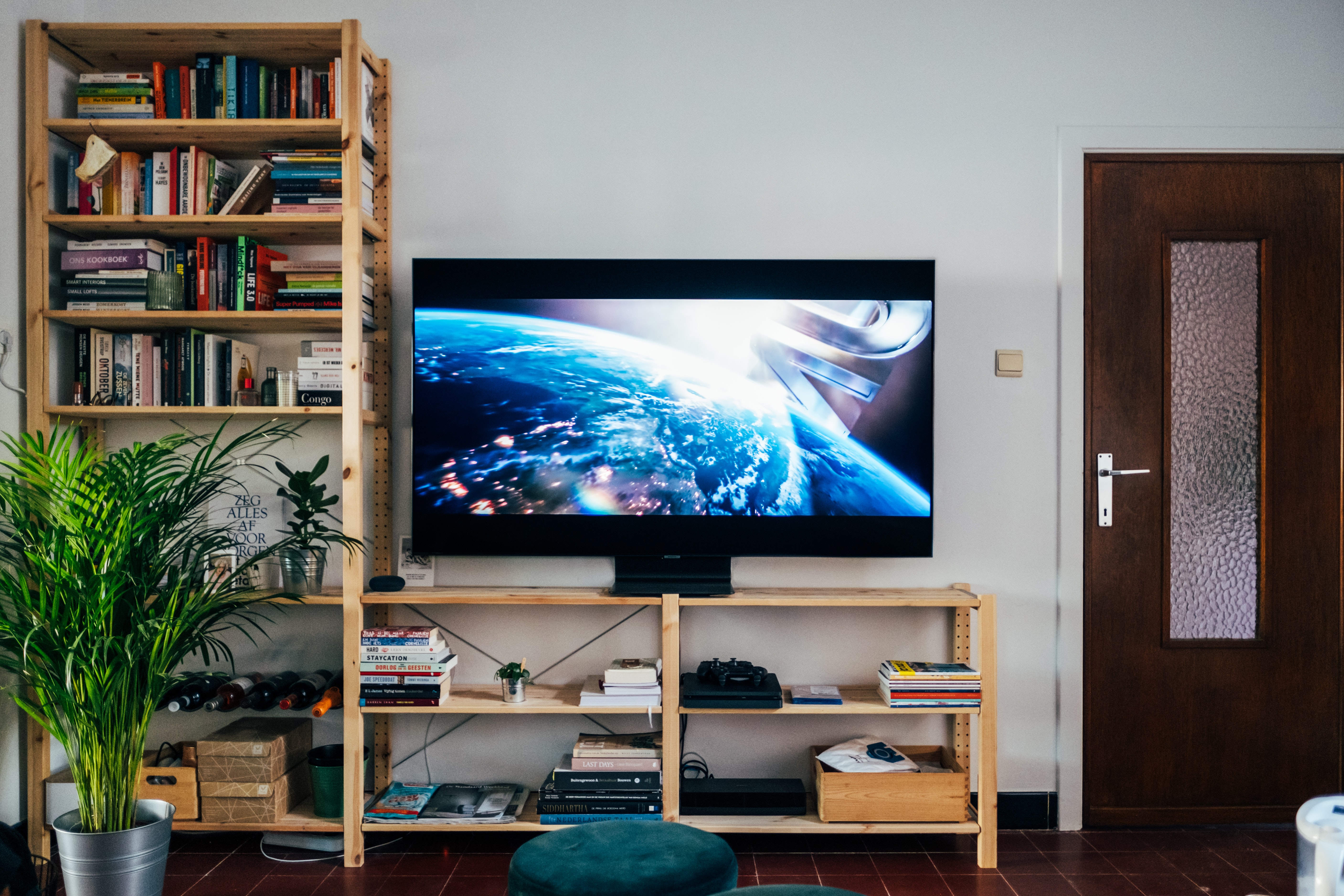In 2010, there were somewhere around 200 television programs available for consumer viewing in the U.S., with only 4 percent of them airing solely on streaming platforms like Netflix. However, by 2020, this figure had more than doubled, according to The Conversation. Because of an uptick in consumer use of streaming services like Netflix and Hulu, and because these platforms are now generating much of their own content, television viewers can access far more narrative content than ever before.
Since so much has changed over the past decade, one can only imagine how television can continue to evolve as both an entertainment and marketing medium by 2030. It’s already fracturing into an almost endless number of channels, devices, sites, and streaming services.
New video trends are transitioning the viewing audience from a broadcast-only environment to a multi-channel, multi-platform digital marketplace. Within a few years, the phrase, “What’s on TV?” may not involve a TV at all.
For media buyers, the ever-evolving digital world adds extra pressure to selecting the right placements. Here are some of the most significant trends in the world of TV and video advertising that could impact media buying strategies in the coming years.
Programmatic Advertising
Programmatic advertising relies on automation tools to make media buys. However, not all programmatic advertising platforms are the same. Some programmatic ad buying approaches are more automated than others. Most programmatic ad buying involves some combination of algorithms and predictive analysis to facilitate fast transactions, with experienced human media strategists overseeing the process and providing valuable insights to organizations looking to connect with their target audience.
In rare cases, programmatic ad buying is entirely based on artificial intelligence (AI) selections with absolutely no human involvement. The issue here is that this entirely automated process comes with the inherent risk of making bad ad buys due to a lack of common-sense oversight.
The use of programmatic advertising is expected to continue rising sharply into 2023 and beyond. Programmatic techniques like real-time bidding, private marketplace bidding, and exchange-based bidding are reducing industry reliance on the traditional request-for-proposal (RFP) and placement process media buying, and with the help of highly-skilled media strategists, can be an integral part of a successful media campaign.
Multiplatform Social Commerce
Another significant video media buying trend is the dominance of social media in buying and branding, which is often called social commerce. eCommerce is happening everywhere on TikTok, Instagram, and other social channels, and video-based social media ads are bolstering sales on these platforms.
Social media video ads are capturing consumer attention in a major way. In fact, HubSpot reported that the amount of videos consumers watch on social media platforms has nearly doubled since 2018 and that 87 percent of video marketers state that video marketing gives them a positive return on investment. The marketing platform also shared that 86 percent of video marketers agree that video marketing is effective for lead generation.
Videos on social media platforms are an increasingly popular tool with consumers, as video posts on social media get 48 percent more views.
This means brands with as much or more dollars invested in social channels as in traditional media channels.
Connected TVs, OTT, and Smart TVs
Connected TV (CTV) describes devices that aren’t TVs but work like TVs even though they connect through platforms with alternate primary uses. OTT devices and smart TVs are similar to CTV in that they aren’t exactly TVs but are other web-connected devices that share video entertainment.
Examples include Amazon Fire, Roku, and Apple TV. More than 80% of American households have at least one of these devices and this figure is expected to inch toward 100% over the next decade.
Common CTV devices include PlayStation and Xbox. CTV ad spending is projected to exceed $30 billion by 2025, with more and more organizations paying attention to the impact that CTV video ads can make.
Just this year it seems that advertising via CTV is taking off. AdWeek reported in May 2022 that ad impressions rose by 23 percent in the first quarter of the year. In fact, 30-second ads are reaching unprecedented impression levels as more consumers watch television via CTV and engage with video ad content.
CTV looks to be a very effective way to connect with consumers, as Exchange Wire shared that CTV viewers are 42 percent more likely to buy a product after viewing a video ad via this platform compared to a traditional TV-viewing consumer.
Short-Form Video
When it comes to video ads, lately it seems that shorter is better. HubSpot’s 2022 Marketing Industry Trends Survey shared that 51 percent of those who utilize short-form videos are planning to increase their investment in this format in 2022, and 38 percent of marketers find it effective enough that they plan to continue to invest the same amount of funding in the form this year compared to last year.
Short-form videos continue to reign supreme in the world of social media video marketing, boasting the highest return on investment of any social media marketing strategy. As it stands, HubSpot also shared that 30 percent of social media marketers will be investing more in short-form videos compared to any other trend this year.
Revenge Retail Spending
Retail marketing is expected to grow by at least 125% in the next few years—and video advertising can plan an important role in connecting with this audience. Have you been tempted to do some extra spending lately? There’s compelling evidence that consumers are engaging in retail therapy and revenge spending due to global and nationwide factors like the COVID-19 pandemic, inflation, and social issues.
Retail therapy is a term for shopping to feel happier or healthier. Revenge spending occurs when buyers make purchases based on a need to financially free themselves from something or someone. These trending phenomena are important to keep in mind when designing TV or video ad campaigns connected to retail buying.
Exchange4Media reports that the “digital industry is benefiting immensely due to revenge spending,” especially when it comes to video-led and short-form video platforms. Brands should keep in mind that these platforms are currently experiencing high levels of demand for their ad inventory, likely thanks to the popularity of video media and a continued surge in revenge spending. This will be especially true during the upcoming holiday season when Exchange4Media anticipates an increase in ad spending for video media.
Brands should keep this in mind when planning their video advertising campaigns and should work closely with highly-skilled media strategists to come up with a strategy that navigates this busy video advertising landscape.
Tips for TV/Video Media Placements
Here at MBI, we often get requests for tips that will help our clients evaluate media options and make smart media-buying choices, thanks to our years of experience crafting successful media strategies. Looking at the current and future trends in television and video advertising, here are a few suggestions for navigating the market:
Stay Adaptable and Flexible
To stay ahead of your competition, avoid getting set in your ways when it comes to making media placements—and work with media strategists (like our team at MBI) who have their finger on the pulse of what’s happening in TV and video ads so they can point you in the right direction. A lucrative new channel could spring up any day and revolutionize how you advertise. Remember when nobody had ever heard of TikTok? Now it has 1 billion monthly users and a TikTok ad campaign can easily cost $50,000 to $100,000.
Targeted Messages Make the Most Sense
A strong message aimed at the right audience with laser-like precision can yield an incredible return on investment. Media strategists can help you get to know your audience more thoroughly and hone in on what makes them tick and where you’ll get the maximum impact from your ad spend. Personalize consumer ads, but do it without being creepy. Stay away from sensitive topics and ad messages that are based on private/personal information that shouldn’t be shared.
Mix It Up
When you’re frustrated with an existing media campaign or don’t feel that you’re getting enough traction, it’s time to refresh your media plan. A media strategist can help you explore innovative new media placements and channels that will shake up how you distribute your marketing messages, connect with your target audiences, and make the most of your media budget in an ever-changing world.
Next Step: Connect With the TV and Video Media Strategy Pros
In the coming years, video advertising—both online and on TV—will be an ever-expanding, important channel for brands looking to connect with consumers. For example, Oberlo reported that in 2022, an impressive 82 percent of global internet traffic will come from streaming videos and downloads.
To put this in perspective, consumers watch 56 exabytes—the equivalent of 56 billion gigabytes—of internet videos each month in 2017. It’s anticipated that this figure will quadruple by the end of 2022, climbing to 240 exabytes per month this year.
Video advertising is the future. And while video advertising isn’t new, the way that consumers are interacting with video advertising is changing and evolving. With these new trends already in motion, we’ll help you craft a strategy that makes sense of it all.
MBI is here to help you develop a TV and video media plan that expands your footprint in the marketplace. We stay ahead of the latest trends and create a plan to maximize your advertising plan’s impact so you’ll always make smart, resource-wise investments with your company’s media strategy.
To learn more, connect with the MBI team of strategists today!

